The acceleration due to gravity is g at a point distant r from the centre of earth of radius R. If r<R, then
g∝r
g∝r2
g∝r−1
g∝r−2
The correct Answer is:A
To solve the problem regarding the acceleration due to gravity g at a point distant r from the center of the Earth, where r<R (inside the Earth), we can follow these steps:
1. Understanding the scenario:
We are given that the distance r is less than the radius R of the Earth. This means we are considering a point inside the Earth.
2. Using the formula for gravitational force:
The gravitational force F acting on an object of mass m at a distance r from the center of the Earth is given by:
F=GMmr2
where G is the gravitational constant and M is the mass of the Earth.
3. Acceleration due to gravity:
The acceleration due to gravity g at a distance r from the center of the Earth can be expressed as:
g=Fm=GMr2
4. Considering the mass of the Earth inside a sphere:
When we are inside the Earth, only the mass of the Earth that is at a distance less than r contributes to the gravitational force. According to the shell theorem, the gravitational effect of a spherical shell of uniform density is zero inside the shell. Therefore, only the mass M′ of the Earth that is within radius r contributes to the gravitational force:
M′=MR3r3
where M is the total mass of the Earth.
5. Substituting M′ into the gravity formula:
Now, substituting M′ into the equation for g:
g=GM′r2=G(MR3r3)r2
6. Simplifying the expression:
Simplifying this gives:
g=GMR3r
This shows that the acceleration due to gravity g is directly proportional to the distance r from the center of the Earth when r<R.
7. Conclusion:
Hence, we conclude that:
g∝r(for r<R)
Final Answer:
The acceleration due to gravity g at a distance r from the center of the Earth (where r<R) is directly proportional to r.
We are given that the distance r is less than the radius R of the Earth. This means we are considering a point inside the Earth.
The gravitational force F acting on an object of mass m at a distance r from the center of the Earth is given by:
F=GMmr2
where G is the gravitational constant and M is the mass of the Earth.
The acceleration due to gravity g at a distance r from the center of the Earth can be expressed as:
g=Fm=GMr2
When we are inside the Earth, only the mass of the Earth that is at a distance less than r contributes to the gravitational force. According to the shell theorem, the gravitational effect of a spherical shell of uniform density is zero inside the shell. Therefore, only the mass M′ of the Earth that is within radius r contributes to the gravitational force:
M′=MR3r3
where M is the total mass of the Earth.
Now, substituting M′ into the equation for g:
g=GM′r2=G(MR3r3)r2
Simplifying this gives:
g=GMR3r
This shows that the acceleration due to gravity g is directly proportional to the distance r from the center of the Earth when r<R.
Hence, we conclude that:
g∝r(for r<R)
The acceleration due to gravity g at a distance r from the center of the Earth (where r<R) is directly proportional to r.
Topper's Solved these Questions
- GRAVITATIONBOOK - A2ZCHAPTER - GRAVITATIONEXERCISE - AIIMS Questions
21 Videos
- GRAVITATIONBOOK - A2ZCHAPTER - GRAVITATIONEXERCISE - Chapter Test
29 Videos
- GRAVITATIONBOOK - A2ZCHAPTER - GRAVITATIONEXERCISE - Assertion Reasoning
16 Videos
- GENERAL KINEMATICS AND MOTION IN ONE DIMENSIONBOOK - A2ZCHAPTER - GENERAL KINEMATICS AND MOTION IN ONE DIMENSIONEXERCISE - Chapter Test
30 Videos
- KINETIC THEORY OF GASES AND THERMODYNAMICSBOOK - A2ZCHAPTER - KINETIC THEORY OF GASES AND THERMODYNAMICSEXERCISE - Chapter Test
29 Videos
Similar Questions
The dependence of acceleration due to gravity g on the distance r from the centre of the earth, assumed to be sphere of radius R of uniform density is a shown in figures along side.
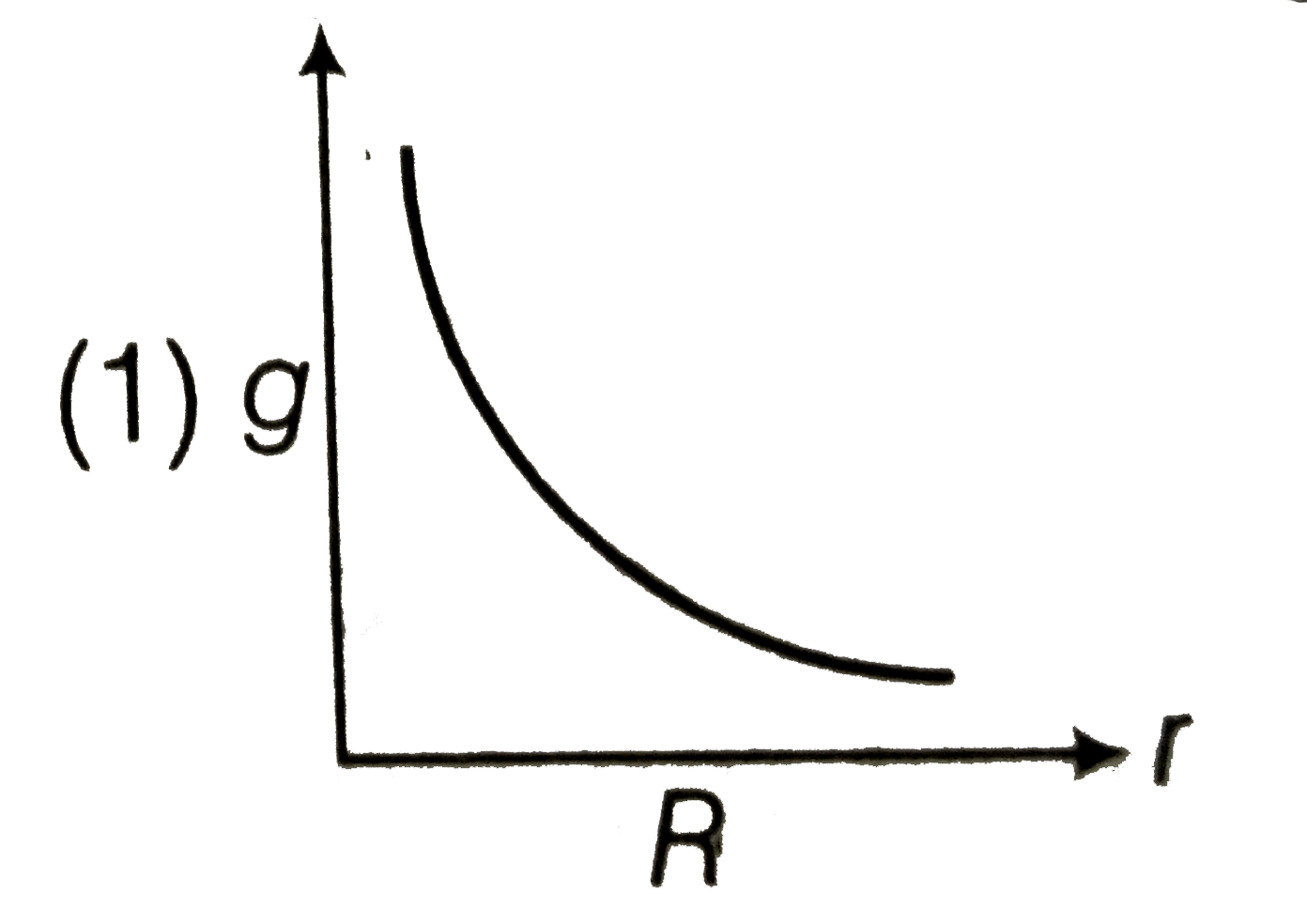
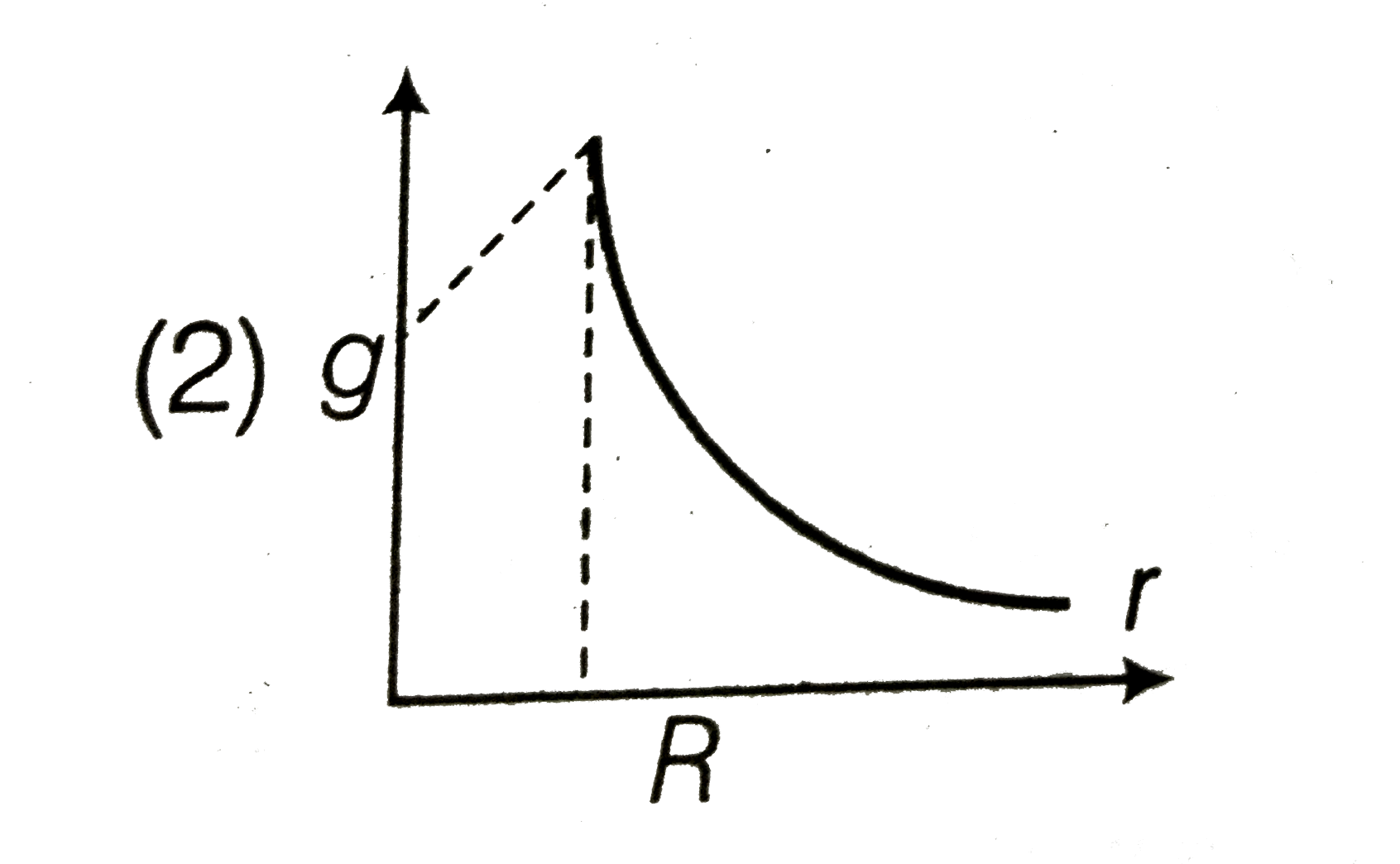
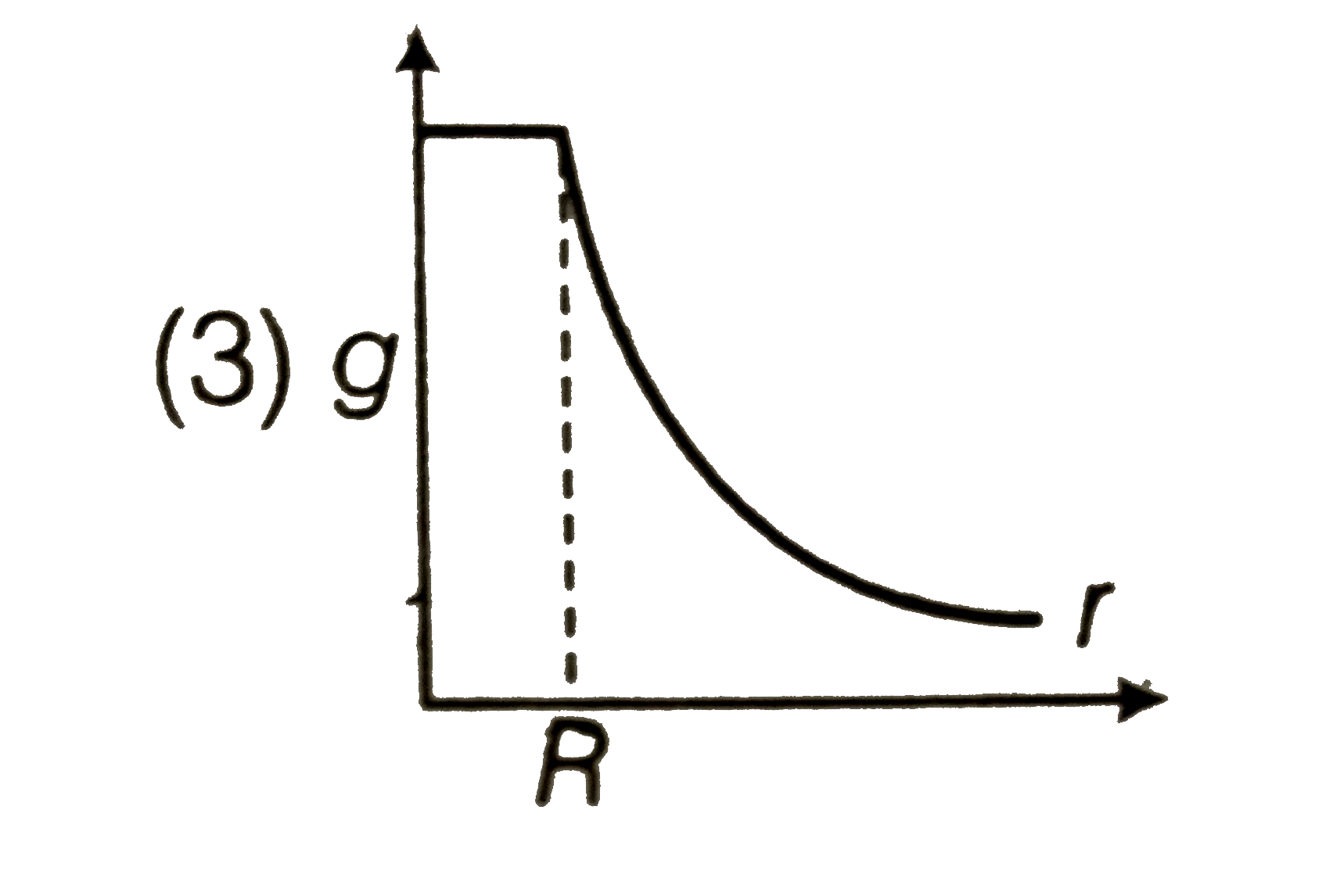
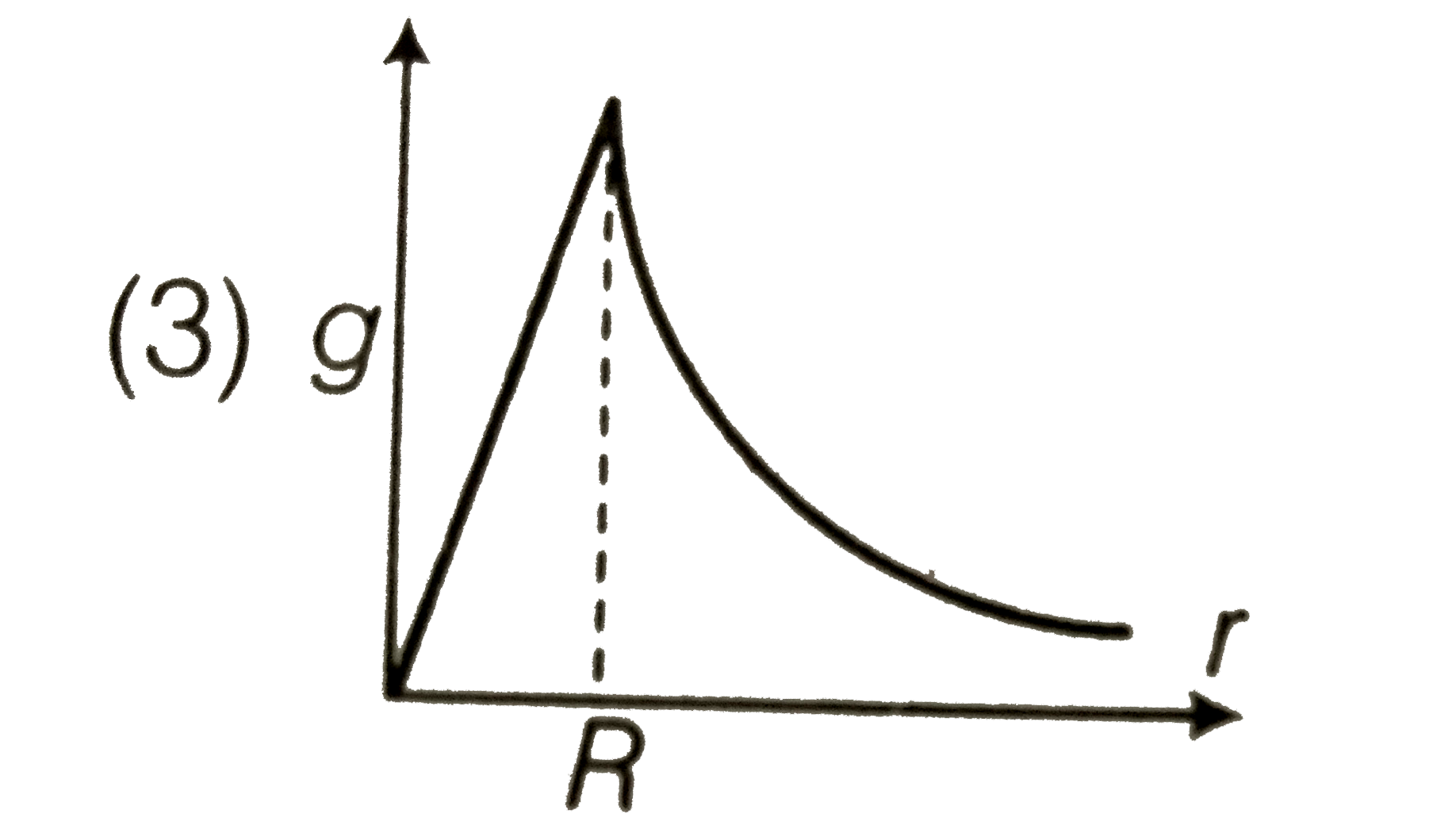
The correct figure is
View SolutionThe acceleration due to gravity at a depth R/2 below the surface of the earth is
View Solution
Knowledge Check
If g denotes the value of acceleration due to gravity at a point distance r from the centre of earth of radius R. If r<R, then
Ag∝r2Bg∝rCg∝1/r2Dg∝1/rThe dependence of acceleration due to gravity g on the distance r from the centre of the earth, assumed to br a sphere of radius R of uniform density is as shoen in Fig. below:
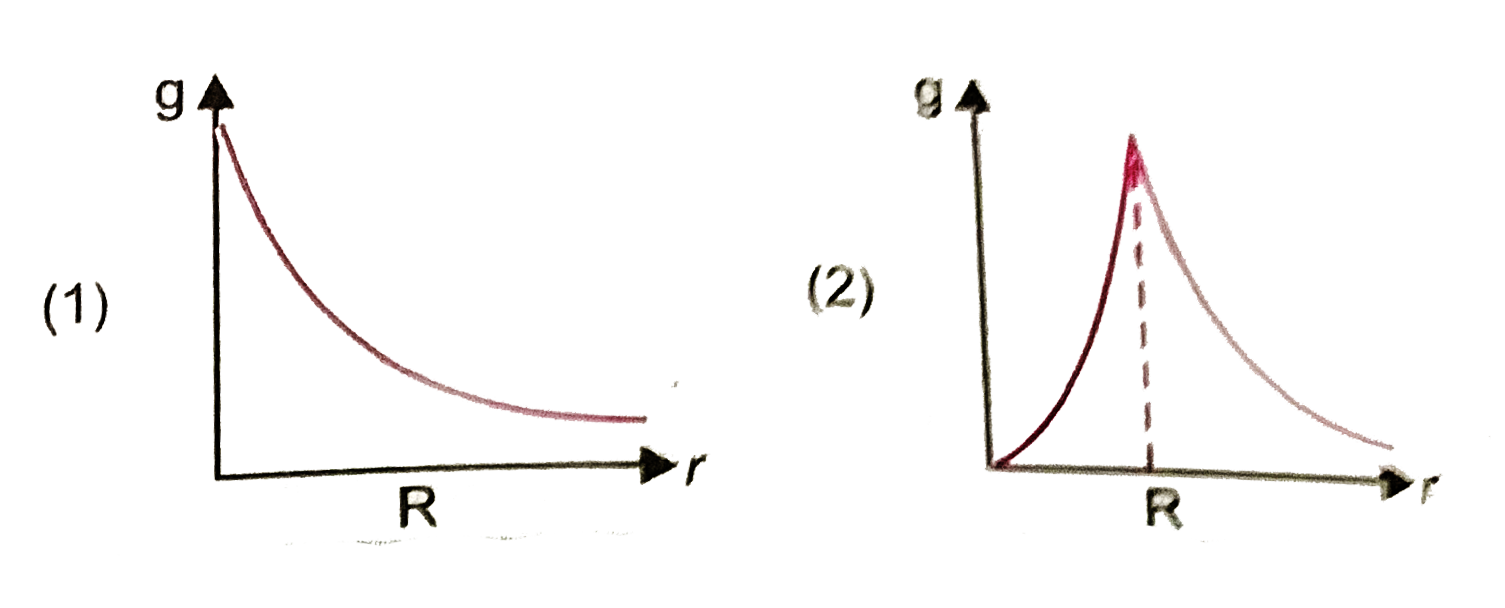

The correct figure isA(4)B(1)C(2)D(3)If R= radius of the earth and g= acceleration due to gravity on the surface of the earth, the acceleration due to gravity at a distance (r<R) from the centre of the earth is proportional to
ArBr2Cr−2Dr−1
The value of the acceleration due to gravity is g1 at a height h=(R)/(2)(R= radius of the earth) from the surface of the earth.It is again equal to (g1/2) at a depth d below the surface of the earth.The ratio d/R equals:
View SolutionIf R= radius of the earth and g= acceleration due to gravity on the surface of the earth, the acceleration due to gravity at a distance (r>R) from the centre of the earth is proportional to
View SolutionThe acceleration due to gravity is g at a point distant r from the centre of earth of radius R. If r<R, then
View SolutionVariation of acceleration due to gravity (g) with distance x from the centre of the Earth is best represented by (R→ Radius of the Earth)
View SolutionIf acceleration due to gravity at distance d [<R] from the centre of earth is β , then its value at distance d above the surface of earth will be [ where R is radius of earth ]
View Solution
